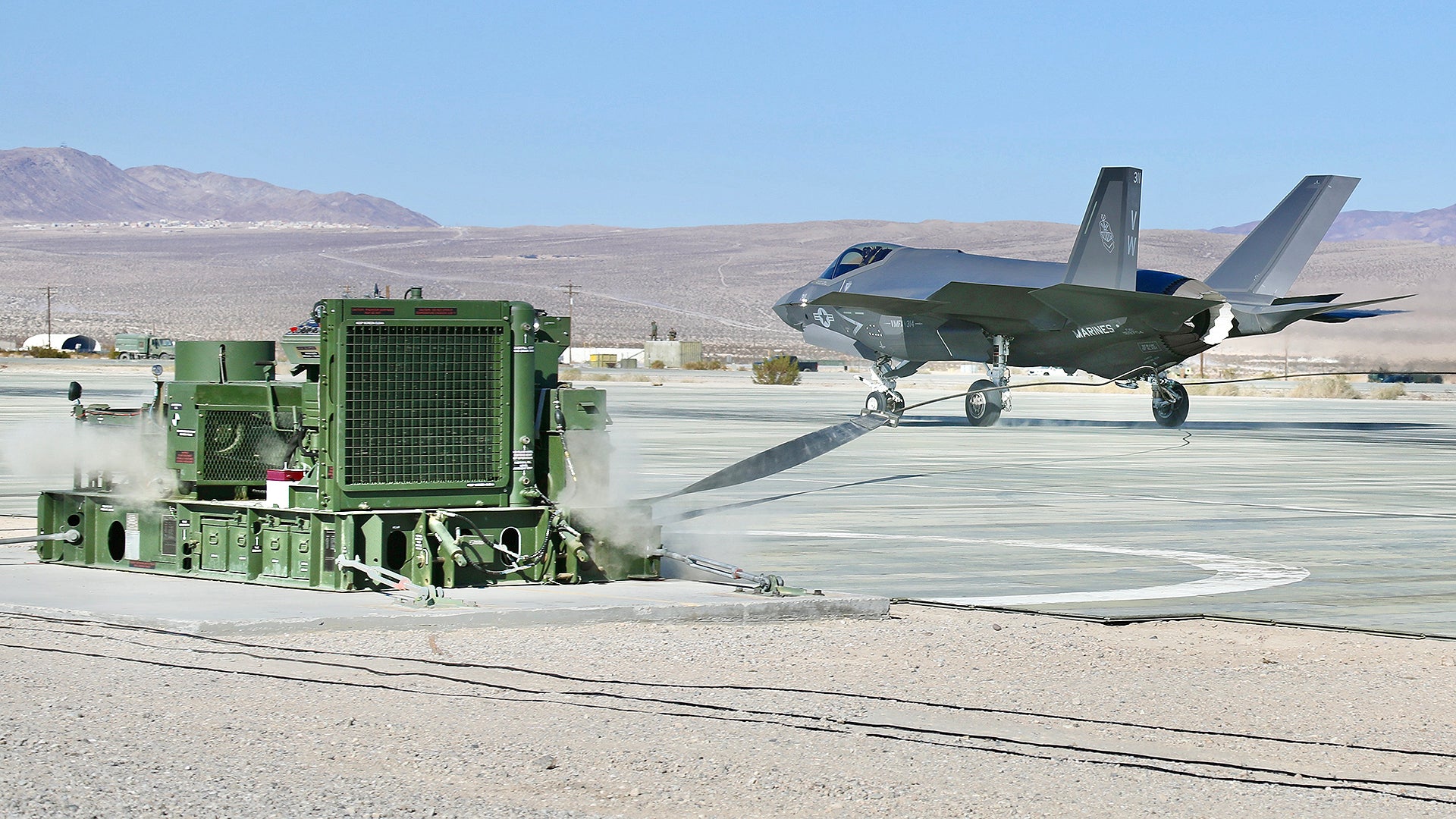While much has been written about the expeditionary capabilities of the U.S. Marine Corps’ F-35B short takeoff and vertical landing, or STOVL, version of the Joint Strike Fighter, Marine Fighter Attack Squadron 314, or VMFA-314, is adding short field and austere operations capabilities to its brand-new F-35C carrier-capable variants. Our correspondent James Deboer ventured out to Marine Corps Air Ground Combat Center in 29 Palms to see the historic demonstration—which could have major impacts on USMC strategy and procurement—for himself. Here is this full report.
The squadron, known as the “Black Knights,” is based at Marine Corps Air Station Miramar, California, and is the first in the USMC to receive the F-35C.
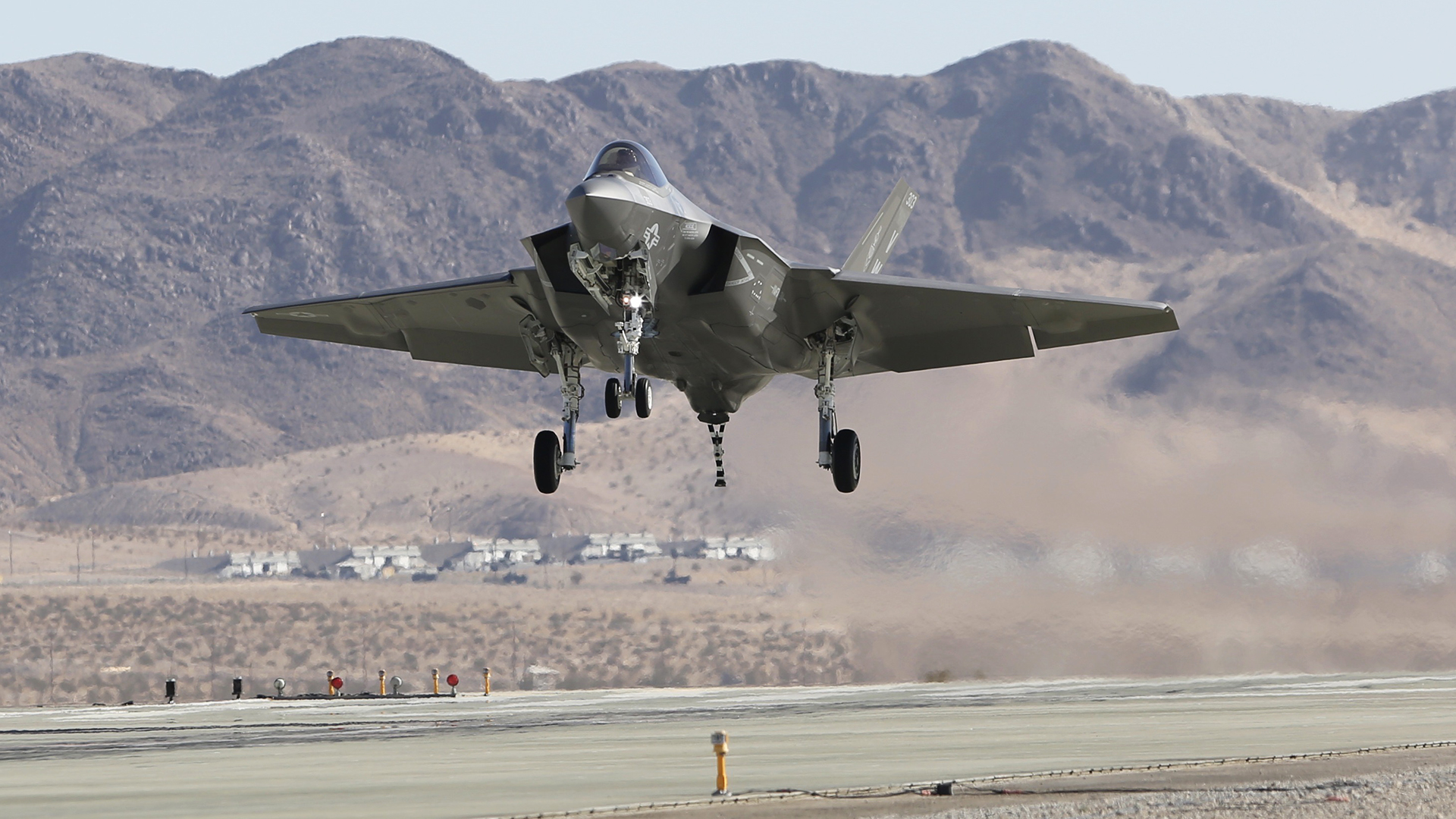
The “Black Knights” are used to making history. This was the first USMC squadron to receive the F-4B Phantom II back in 1961, and in 1982 it was the first operational squadron anywhere in the U.S. military to fly the F/A-18A/B “legacy” Hornet.
While the IOC milestone enables VMFA-314 to deploy its F-35Cs onto aircraft carriers, where they will be able to support combat operations as part of Carrier Air Wing 9, the unit hasn’t stopped there.
The ability to operate as part of a Carrier Air Wing is a very important one and continues the long tradition of Marine squadrons operating from U.S. Navy aircraft carriers. VMFA-314’s sister squadron in MAG-11, VMFA-323, is currently deployed with Carrier Air Wing 17, making history with the last F/A-18C carrier deployment. Meanwhile, the “Black Knights” have been working toward operating the new aircraft in an expeditionary manner.
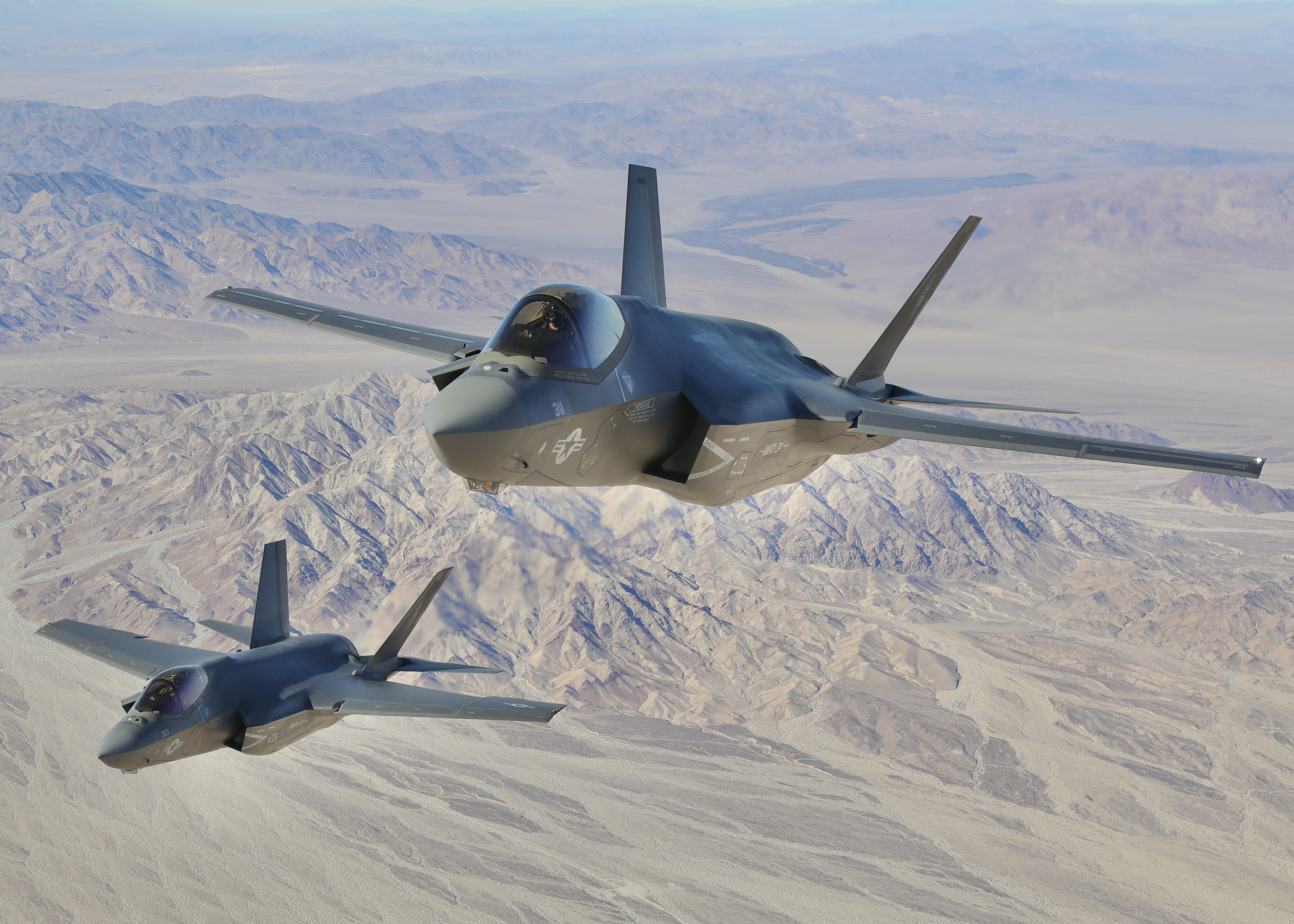
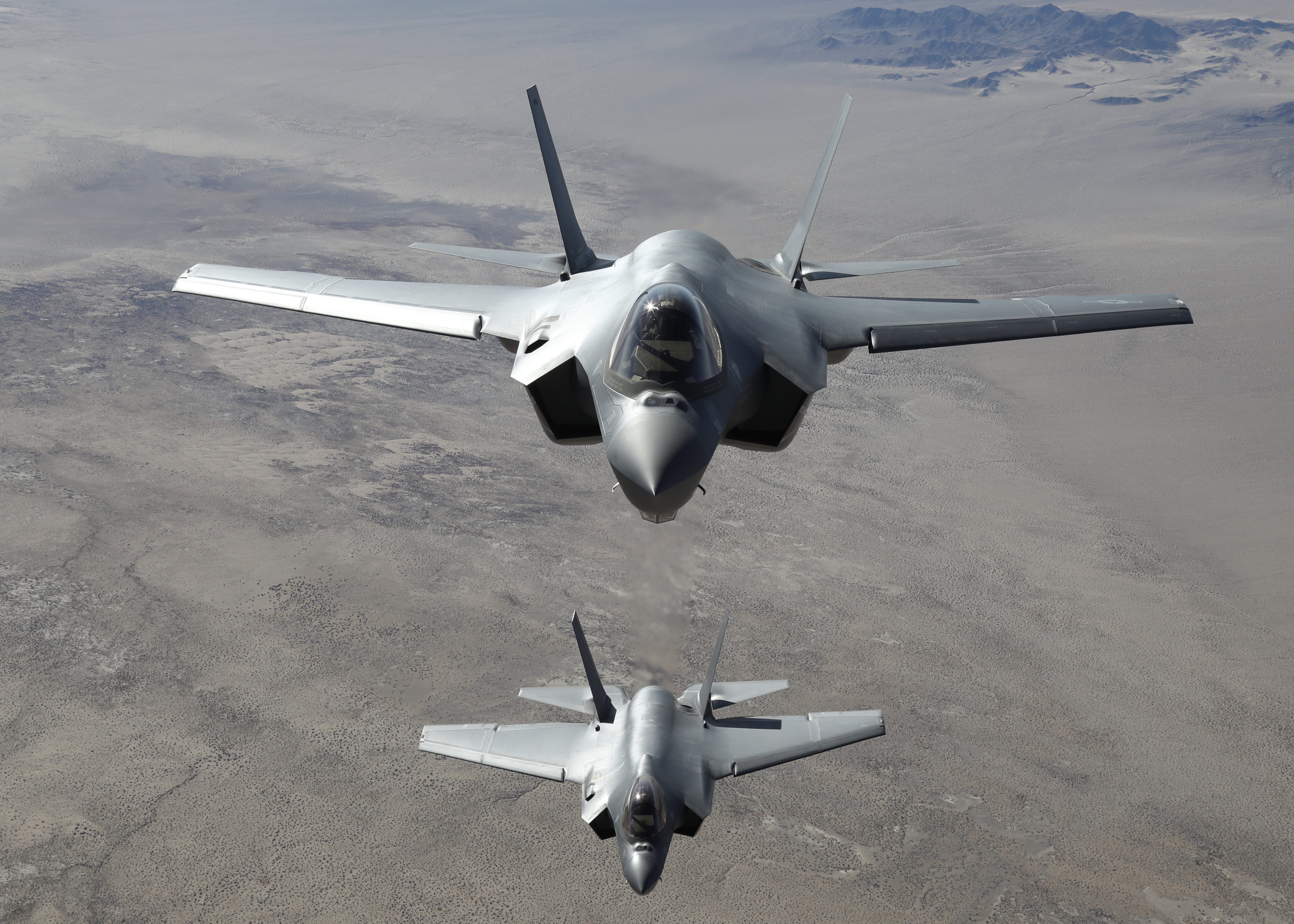
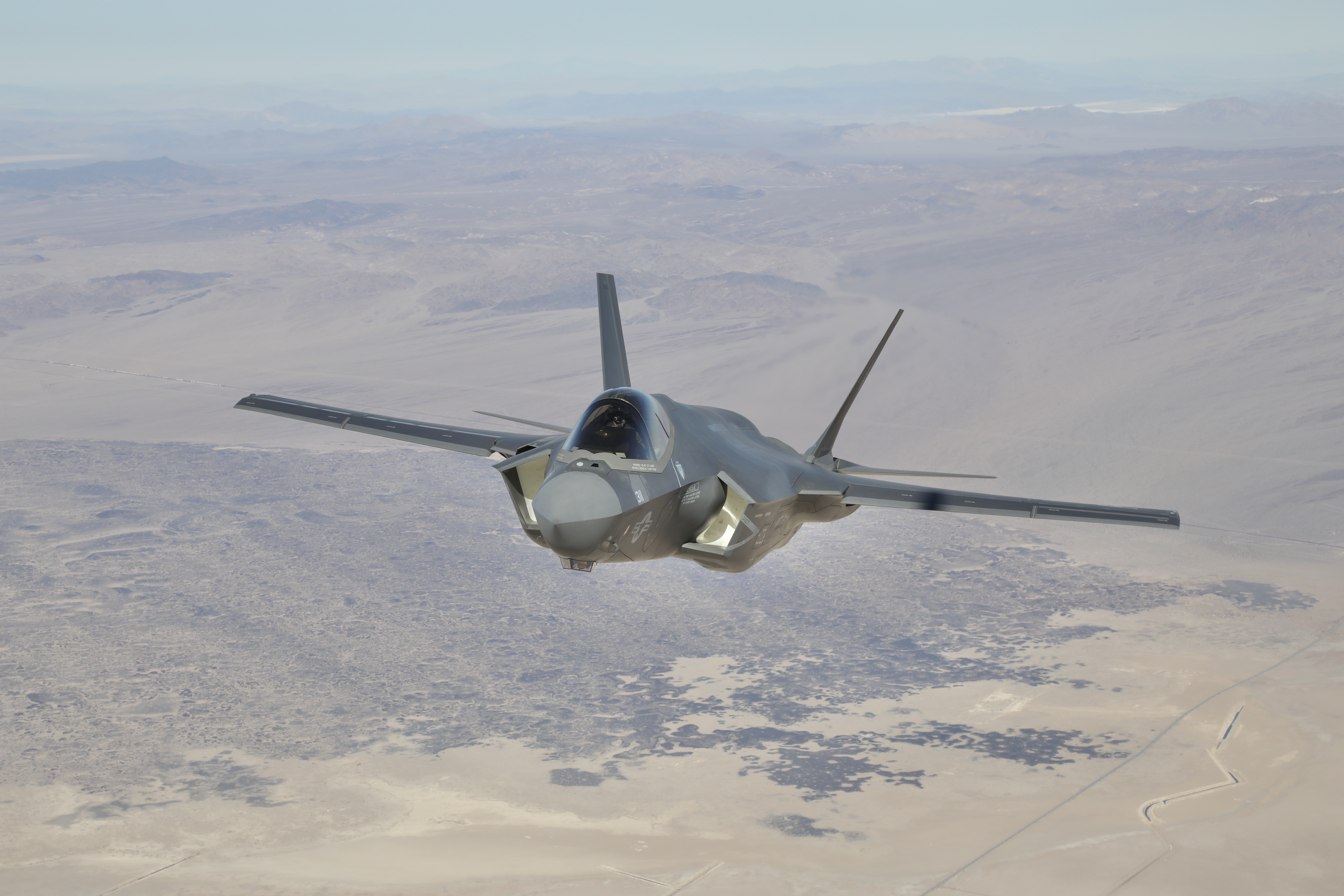
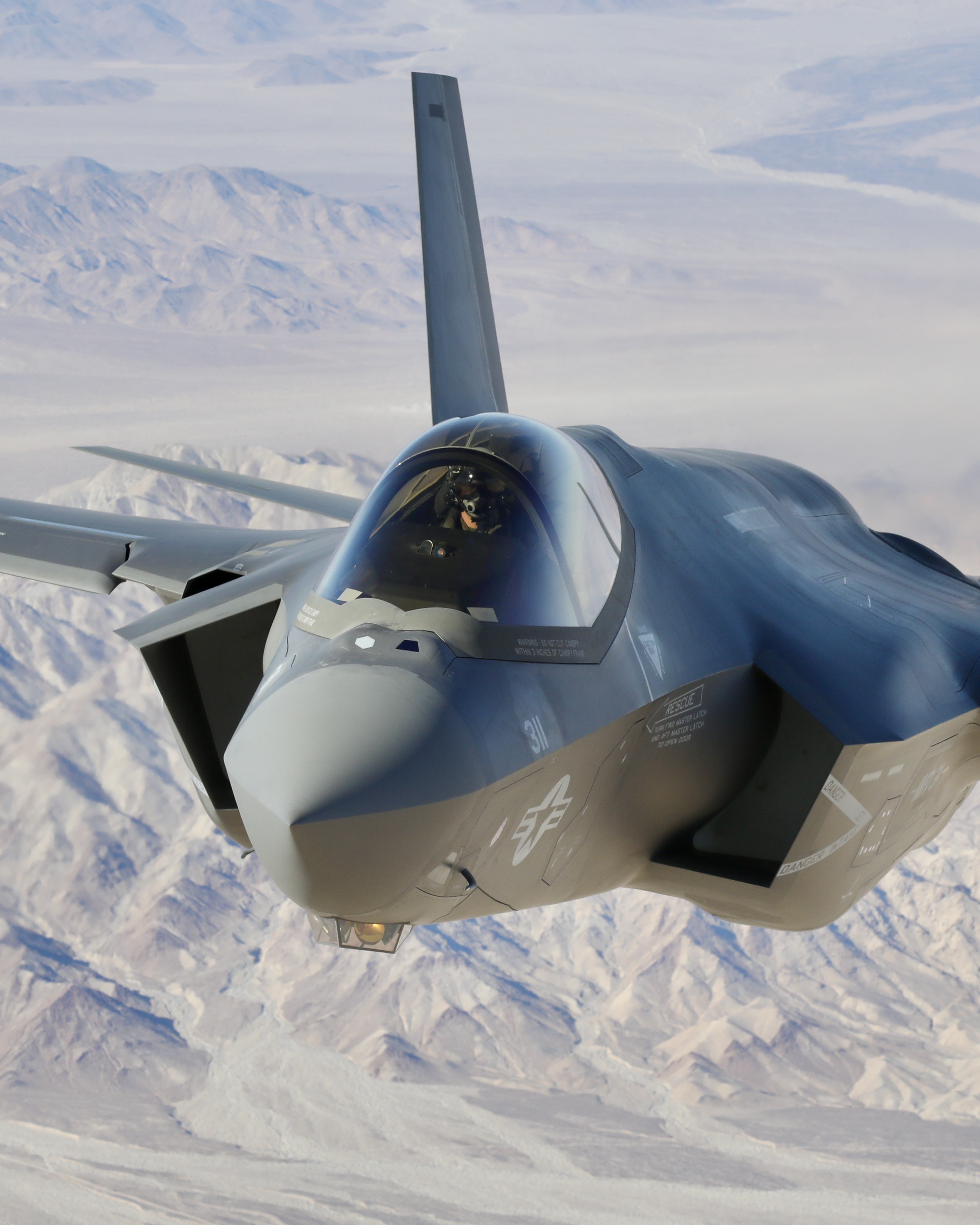
For the last several months the squadron has trained for Expeditionary Advanced Base Operations (EABO). The 2019 USMC Aviation Plan describes the EABO concept as follows:
“EABO is a future naval operational concept that mitigates peer competitors’ anti-access/area-denial capability by creating a more survivable, resilient, and persistent forward-postured force. The EABO concept is designed to re-establish the force credibility required to have a deterrent effect. Using key maritime terrain in the vicinity of close and confined seas, EABO provides decision-makers with sea denial options that are coercive, but not escalatory.
Nested within other naval and joint concepts such as Joint Access and Maneuver in the Global Commons (JAM-GC) and Littoral Operations in a Contested Environment (LOCE), EABO sustains and advances the inside force’s ability to leverage the lethality of the outside force. The EABO concept is comprised of low-signature, mobile, relatively low-cost capabilities operating in expeditionary and temporary locations. These capabilities provide the joint force commander with the ability to target and strike the adversary while also making up the backbone of an active maritime defense-in-depth.
EABO provides the Joint Force Maritime Component Commander (JFMCC) with sea denial options by using advanced bases to position and operate joint aircraft. All six functions of Marine aviation can be executed through the use of mobile and expeditionary EABs. By using all available basing options, Marine aviation can expand the reach and lethality of the joint force commander.”
To better prepare for real-world EABO scenarios, a great deal of planning culminating in a unique training event at Marine Corps Air Ground Combat Center (MCAGCC) Twentynine Palms in the Californian desert last week. Two of the squadron’s jets landed for the first time using the M-31 expeditionary arresting gear, which acts much like the arresting cable on an aircraft carrier. It enables Marine F-35Cs and F/A-18s to land on much smaller runways, which is especially important as the Marines continue to “pivot” to the Pacific theater.

After nearly two decades of fighting insurgents in the Middle East, the Marine Corps is refocusing itself on fighting higher-end peer-state conflicts. This could demand the ability to hop from island to island in the western Pacific, where Marine Corps airpower and other forces would be able to disrupt the Chinese military’s ability to defend their own territorial claims and to defeat U.S. forces by destroying well-established infrastructure that traditionally supports them in the region.
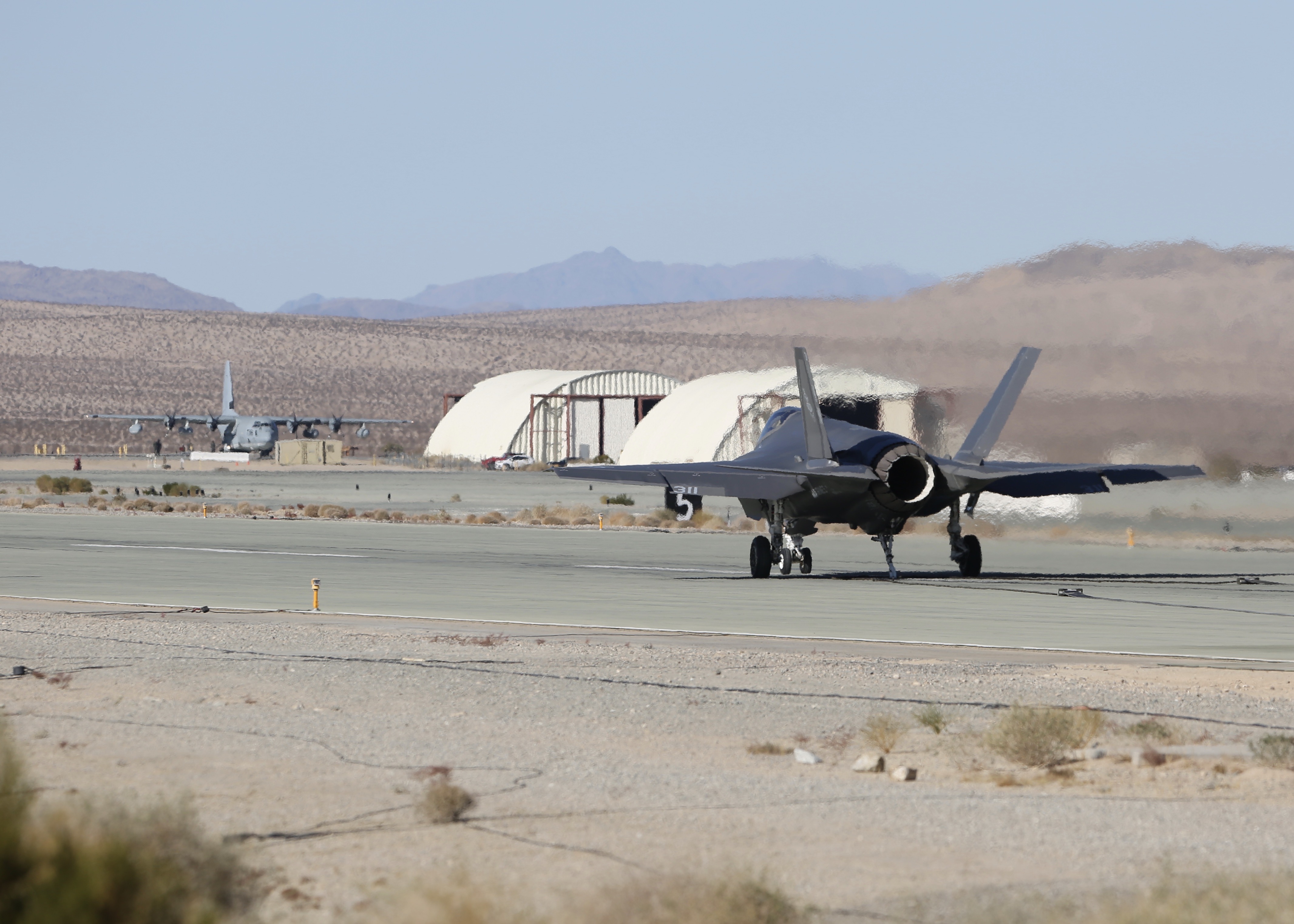
VMFA-314 is part of Marine Air Group 11, or MAG-11, which comprises all of the non-F-35B fixed-wing aircraft that the Marines operate on the west coast. Alongside several F/A-18 squadrons, the group operates a KC-130J squadron which is vital to the EABO concept. The KC-130Js of VMGR-352 “Raiders” give the other squadrons the ability to refuel and rearm on the ground, as well as providing the aerial refueling to give aircraft the extended range needed to operate over the vast Pacific Ocean.
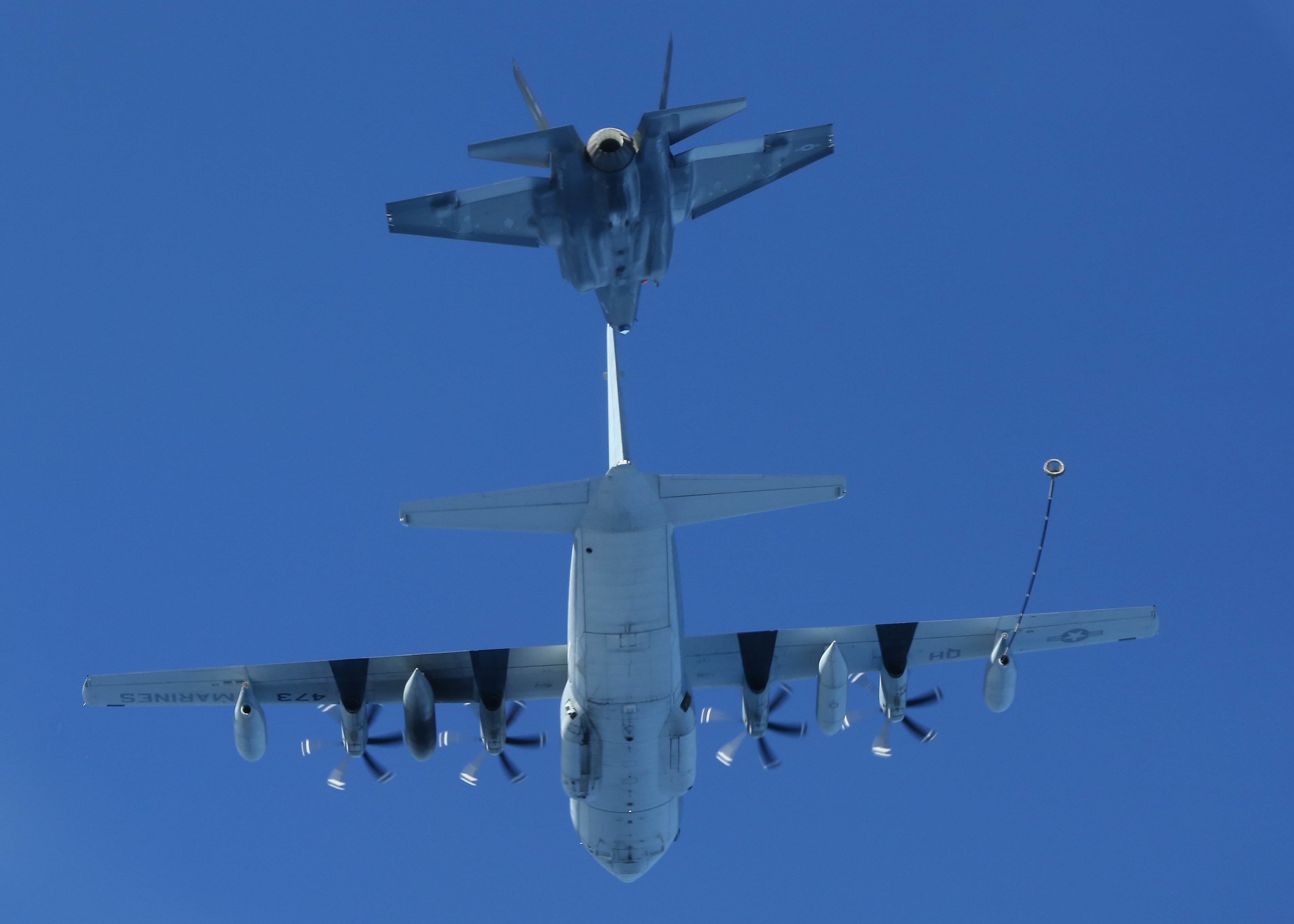
MAG-11 also includes the often-overlooked squadron known as MWSS-373. Marine Wing Support Squadrons like 373 are essential for expeditionary advanced base operations, as they provide all the ground equipment and personnel needed to make it all happen.
MAG-11, and all the other Marine aircraft on the west coast, fall under the 3rd Marine Air Wing (3rd MAW), which is commanded by Major General Christopher J. Mahoney. Mahoney has over 5,000 hours of flight time in the A-6, F-5, F/A-18, and the F-35 and knows a thing or two about operating in the Pacific theater. He has deployed there several times and recently served as the Deputy Commander of Marine Forces Pacific as well as the Deputy Commander, United States Forces Japan.
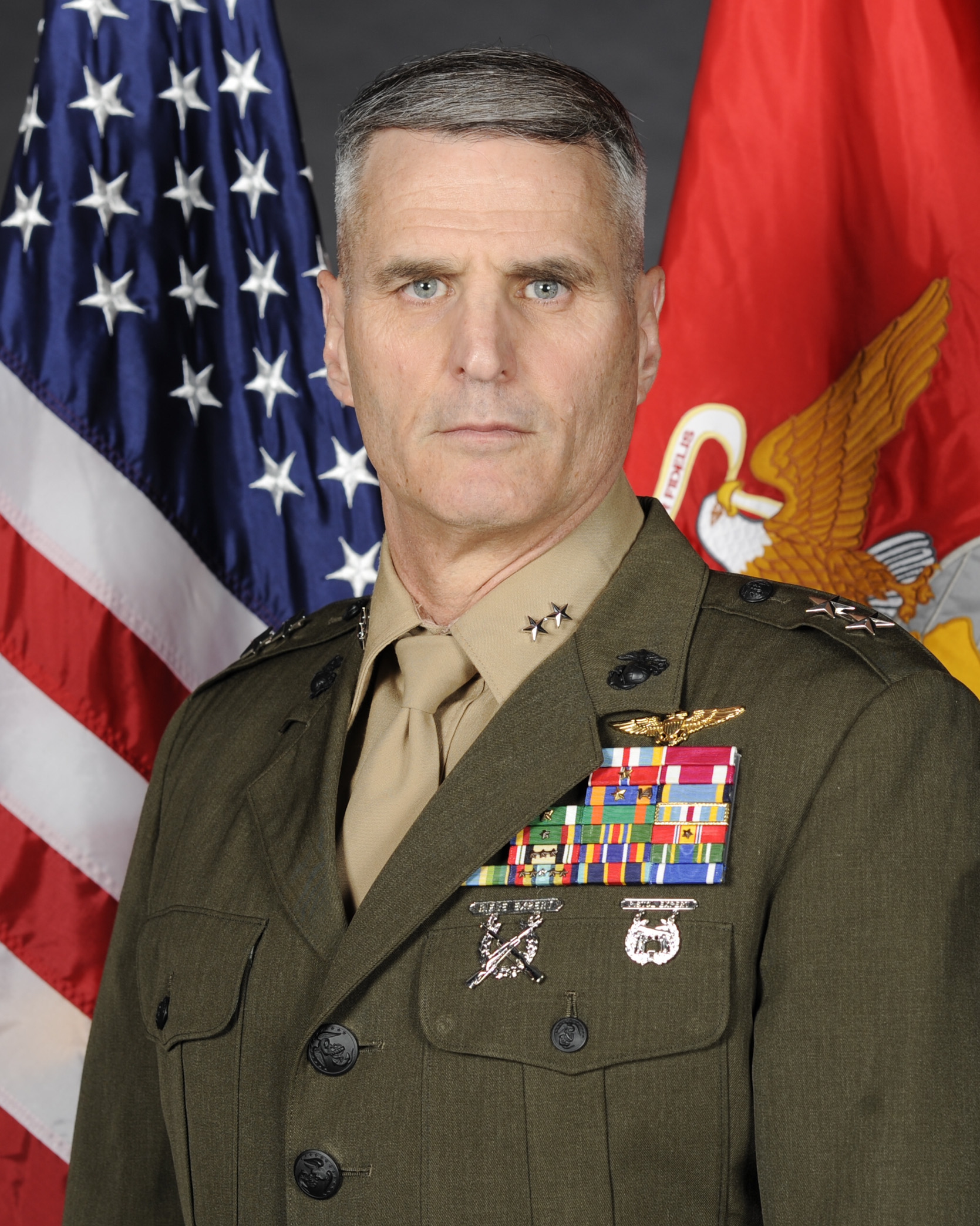
“We had a sanctuary up there [in the Middle East], Mahoney told The War Zone when asked about the shift to the Pacific from the Middle East. “They may be shooting at you but, you know, they weren’t getting me — at 1,000 feet per second, they’re not going there. We had to deliver ordnance very, very close to the guys on the ground. First, we had to make sure we did no harm and then we would start killing the people after that.”
“But now we’re in a different game, of once again penetrating a very formidable array of defensive threats and offensive threats, and then exploiting that penetration by either penetrating further or picking out the systems that we want to try and destroy, either destroying them kinetically or destroying them some other way with a third system or by other means.”
“So, here in the wing, we have grabbed on to the Commandant’s vision of force design into being able to move to first of all work inside that threat ring or bubble. We’re very close to threat systems, inside their kinematic range, inside their sensing range, inside their data range, and getting comfortable doing that, which means that you have to be able to sense them, then you have to be able to move if they have the ability to target you, and you have to be able to counter-punch or punch preemptively.”
“So, the EABO concept as part of that is about moving around, establishing a capability, sustaining that capability, and then moving again before you become a seductive target to somebody. That is what we’re moving toward with EABO.”
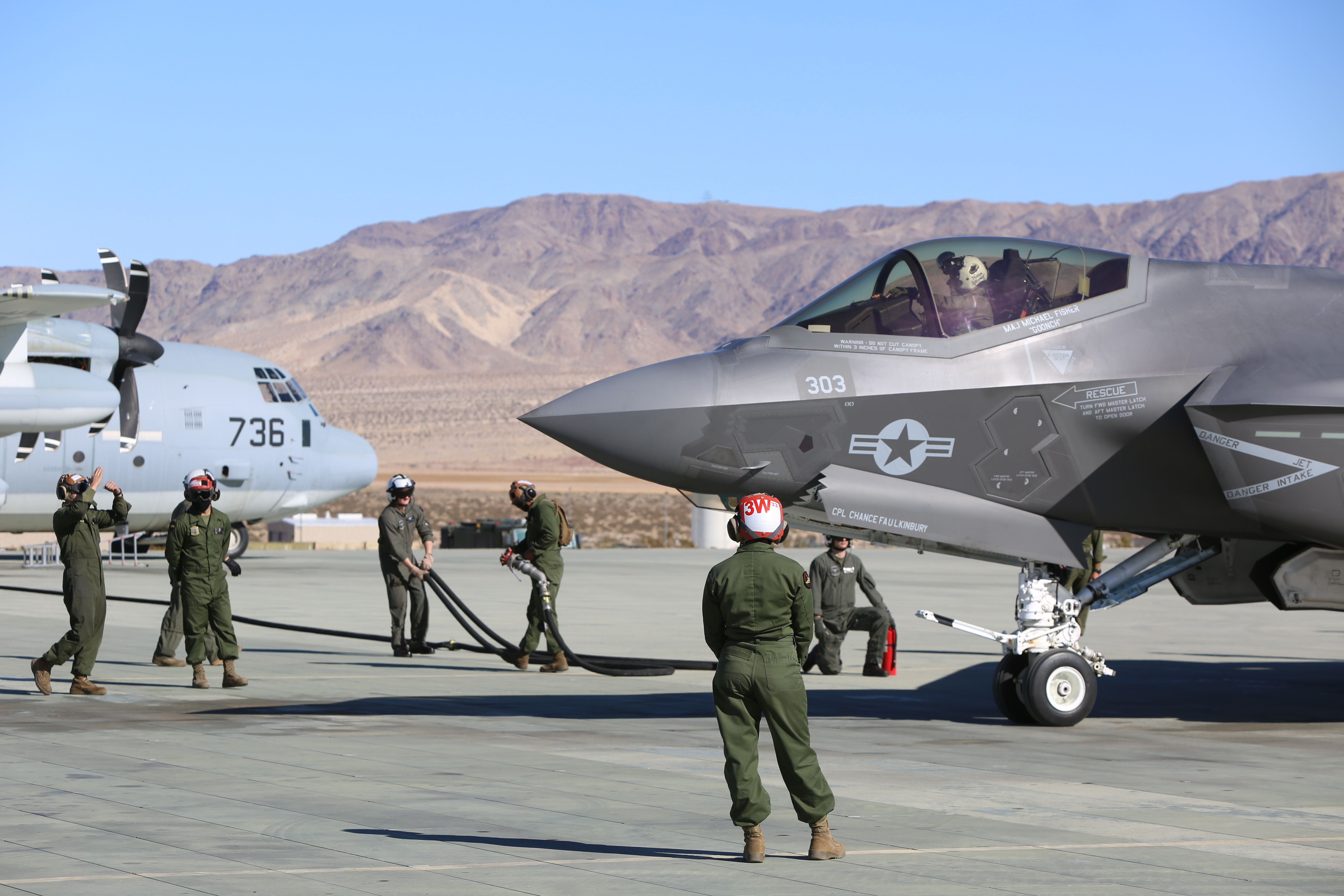
“In the Marine Corps, if I want a new idea, I read an old book,” Major General Mahoney continued. “If you look at Operation Cartwheel in World War II, up in the Solomon Islands, and how we executed particularly aviation operations in Korea, that’s what we did. MAG-12 moved across several airfields and moved around depending on where the fight was, picked up their trash, moved around, got in battery, and started generating combat power or moved back onto the ship and then moved back ashore. The MAG didn’t but individual squadrons did. So, those ideas and those capabilities are things we’ve got historical experience with. Now it’s a matter of reintroducing them intellectually and then making the structure follow the concept and thoughts and then training to the functions that we want to perform.”
“We are integrating in a larger sense like we’ve been doing for the last 20 years with the United States Navy with fleet action. Because if you look at where we’re going to fight, there’s a lot of water out there. And the water to me is like a big highway. You either are the cop that controls it, or you are the guy who’s trying to speed through there and not get caught. You’ve got to be able to exploit that maneuver space and everything up there is littoral space that is influenced either directly or indirectly from maritime space, so you’ve got to be able to operate in that space, and who does it better than the United States Navy? You know, that’s where I think the real strength of the concepts come from.”

Preparing the F-35C for EABO was no easy task. Under the leadership of its commanding officer, Lt Col Brendan Walsh, VMFA-314 chose Major Robert ‘Murphy’ Ahern to get the job done. Major Ahern began planning the event several months ago and had to get all the right parties involved.
First, the squadron was certified to do the “hot” reload while operating out of Marine Corps Air Station (MCAS) Yuma during Weapons and Tactics Instructor Course 1-21 in Arizona in October. Next, it had to get the clearance to use the M-31 arresting gear for the F-35C. This involved getting approval from Lockheed Martin and the Joint Program Office (JPO) to land within a certain envelope.
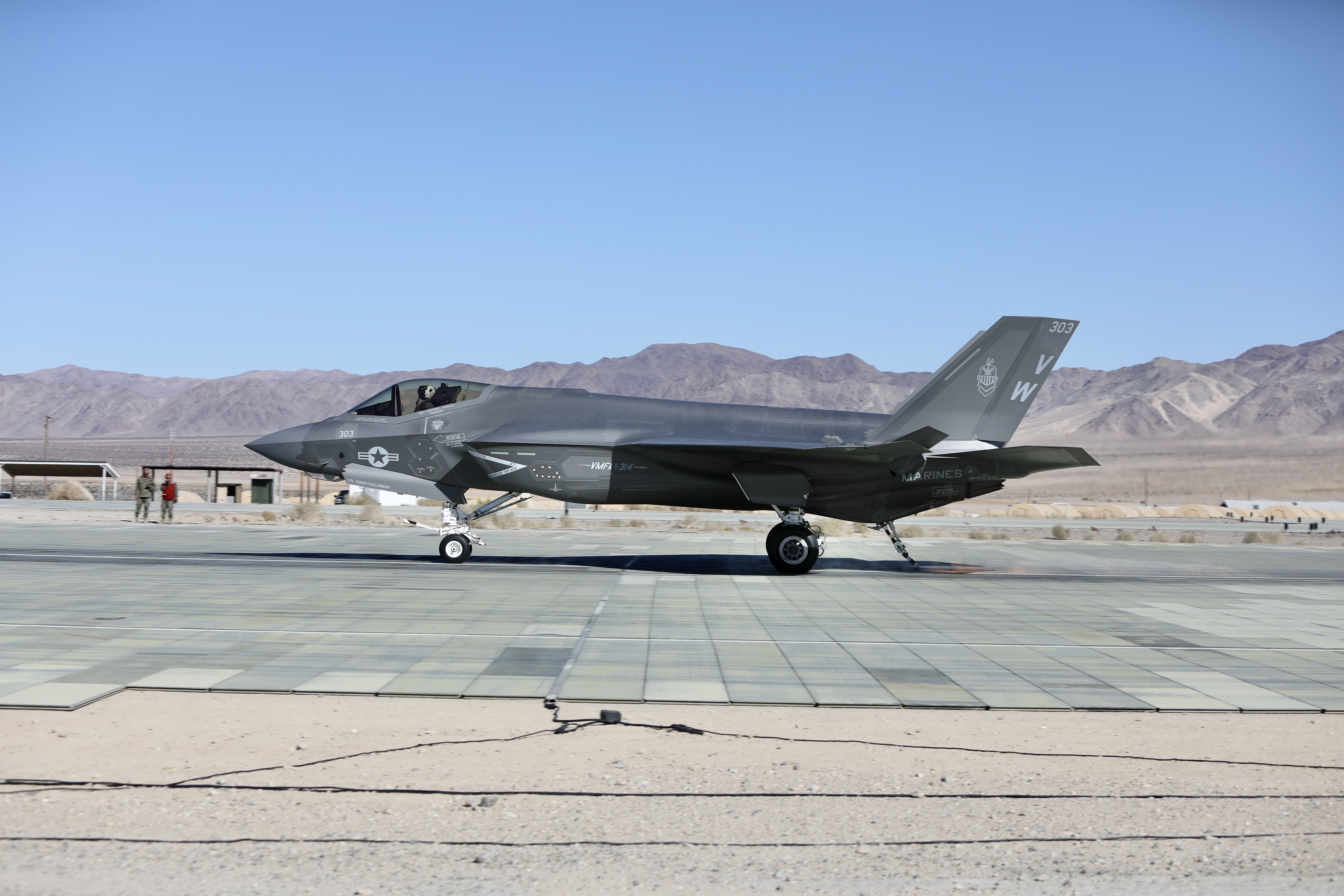
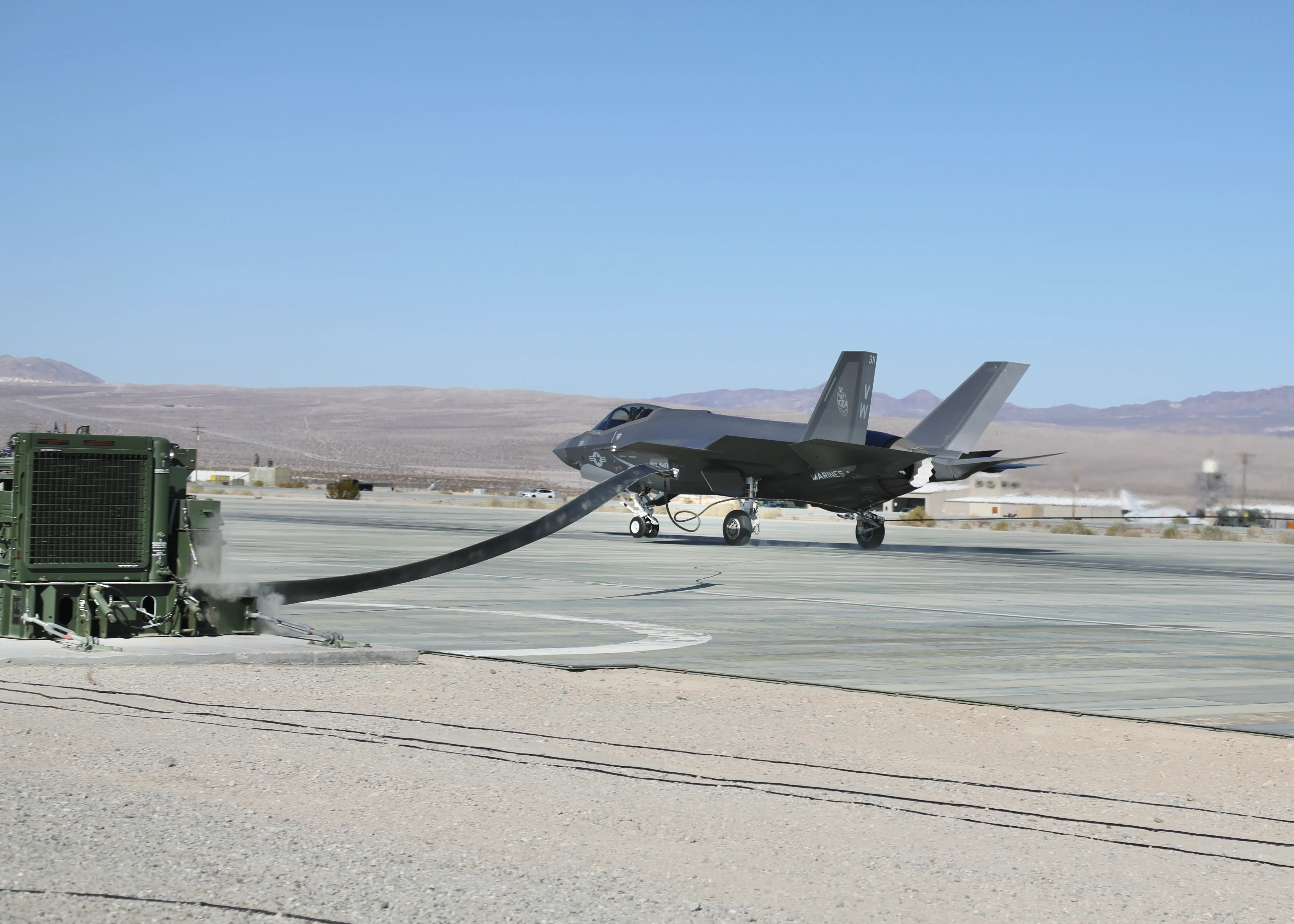
“This is the first time we have combined a hot reload with an arresting gear landing in the F-35C,” Major Ahern explained. “The whole point was to show that while, yes, the F-35B can hover and land on a prepared surface, for us operating with a larger wing area and more weapons capability added to a much longer range than the F-35B, we can do the expeditionary mission much in the same way the F/A-18 Hornet would, where you have a runway of about 3,000 feet and an MWSS that has the ability to set up the arresting gear. Depending on how heavy the aircraft are on takeoff, they usually need between 2,000 and 3,000 feet of runway. Now they have weapons, fuel, and way better range than the F-35B and can stay in the fight longer.”
“Lockheed Martin and the JPO approved the envelope and were all very responsive to make it happen. We are about four years ahead of schedule from when they thought they would test these concepts. They kept it very similar to max trap weight that is seen on the ship, so the risk was small, so all of the engineers did their behind-the-scenes numbers very quickly. We came in at 150 knots at roughly 45,000 pounds.”
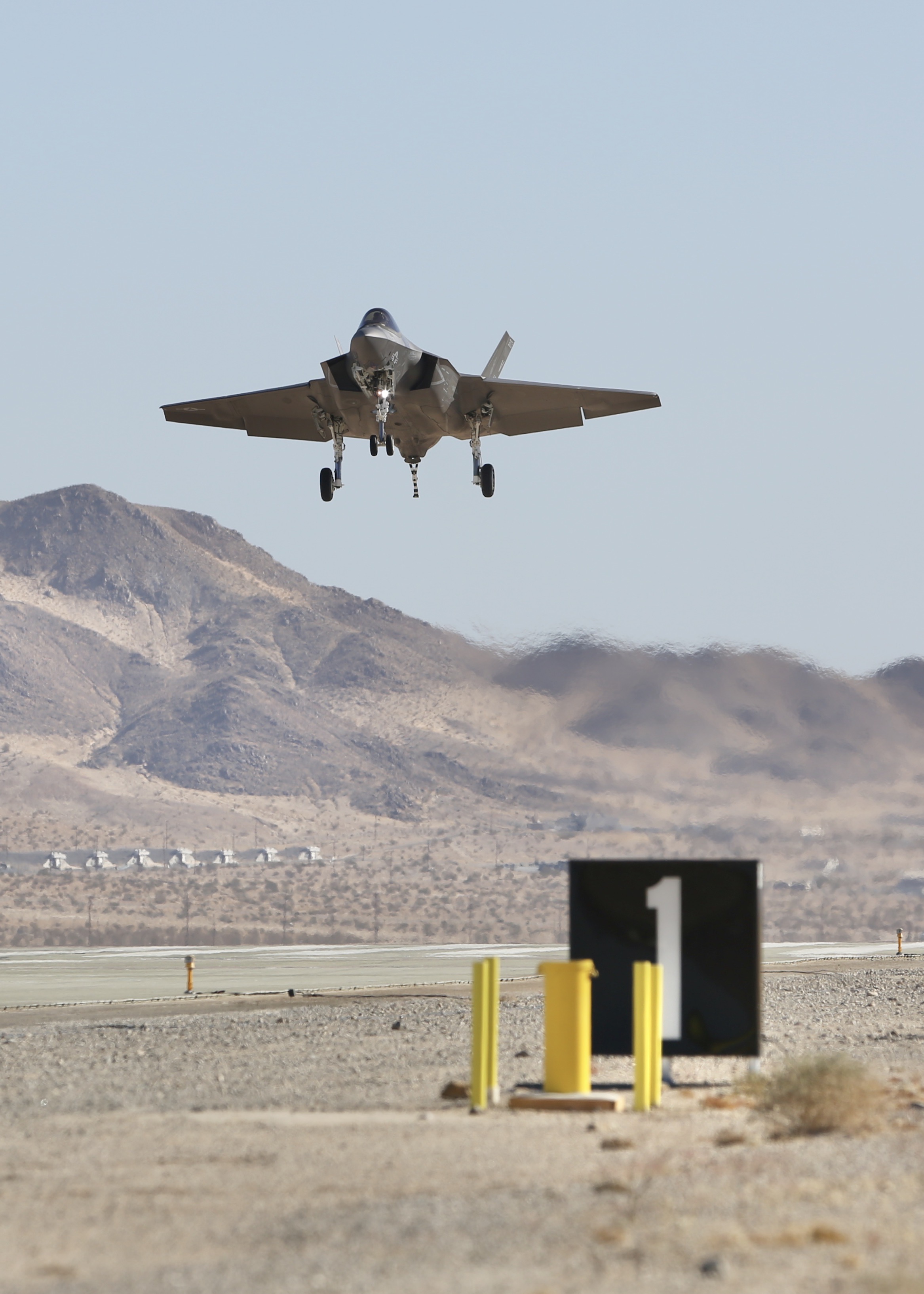
Having all of the squadrons needed for the EABO concept in MAG-11 made it much easier to plan and execute. On December 3, a MAG-11 KC-130J from VMGR-352 took off from MCAS Miramar. Onboard the fuel-laden Hercules were two ordnance teams from VMFA-314 and four inert GBU-32s. The GBU-32 is a 1,000-pound Joint Direct Attack Munition (JDAM) that uses a guidance kit that converts unguided bombs, into all-weather precision-guided munitions. Also on board were other Marines that would quickly help set up the Forward Arming and Refueling Point(FARP).
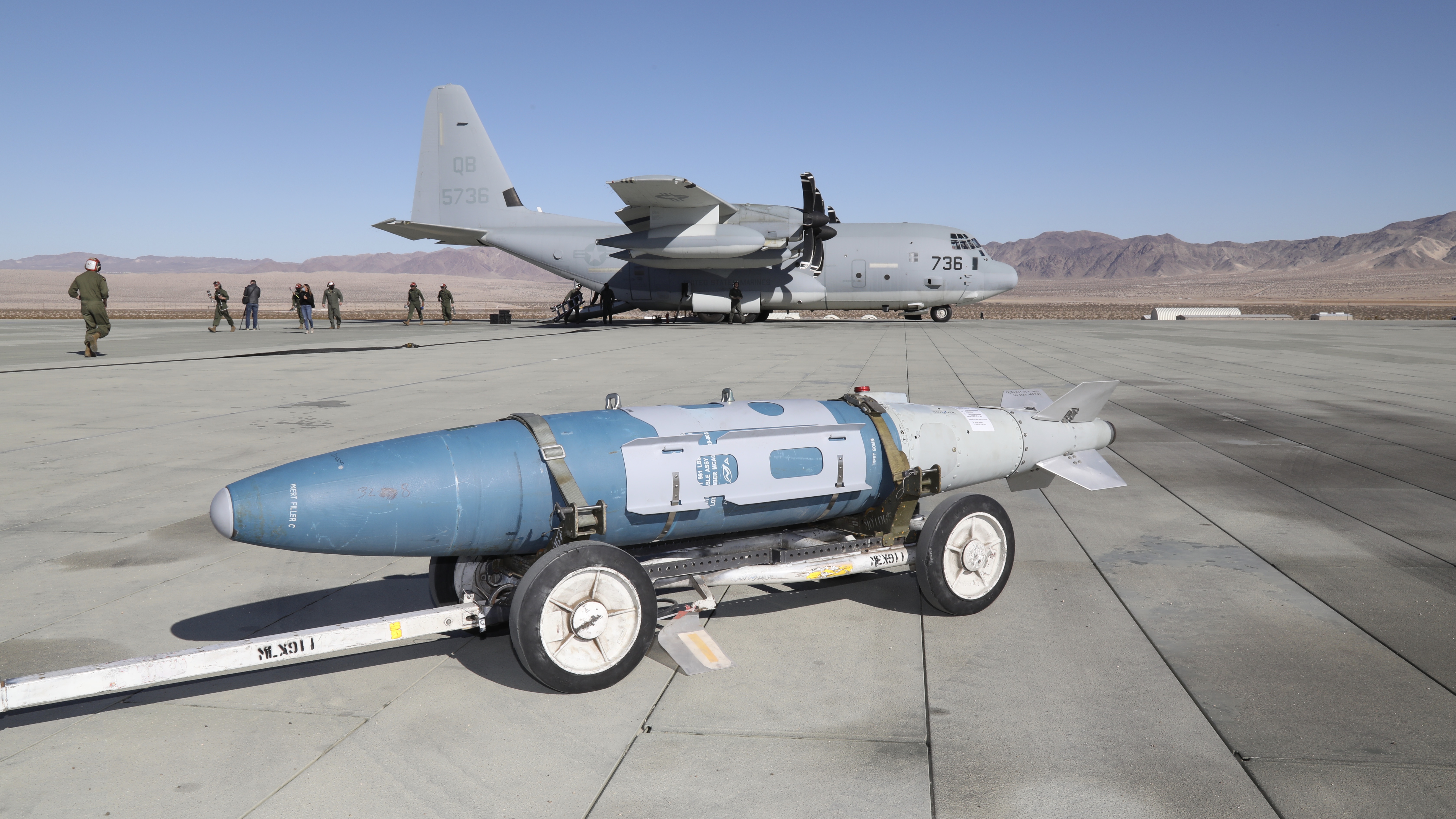
The KC-130 touched down at the Strategic Expeditionary Landing Field (SELF) at MCAGCC Twentynine Palms. The airfield is made up of an aluminum-matted surface that is designed for sustained operations in an amphibious objective area.
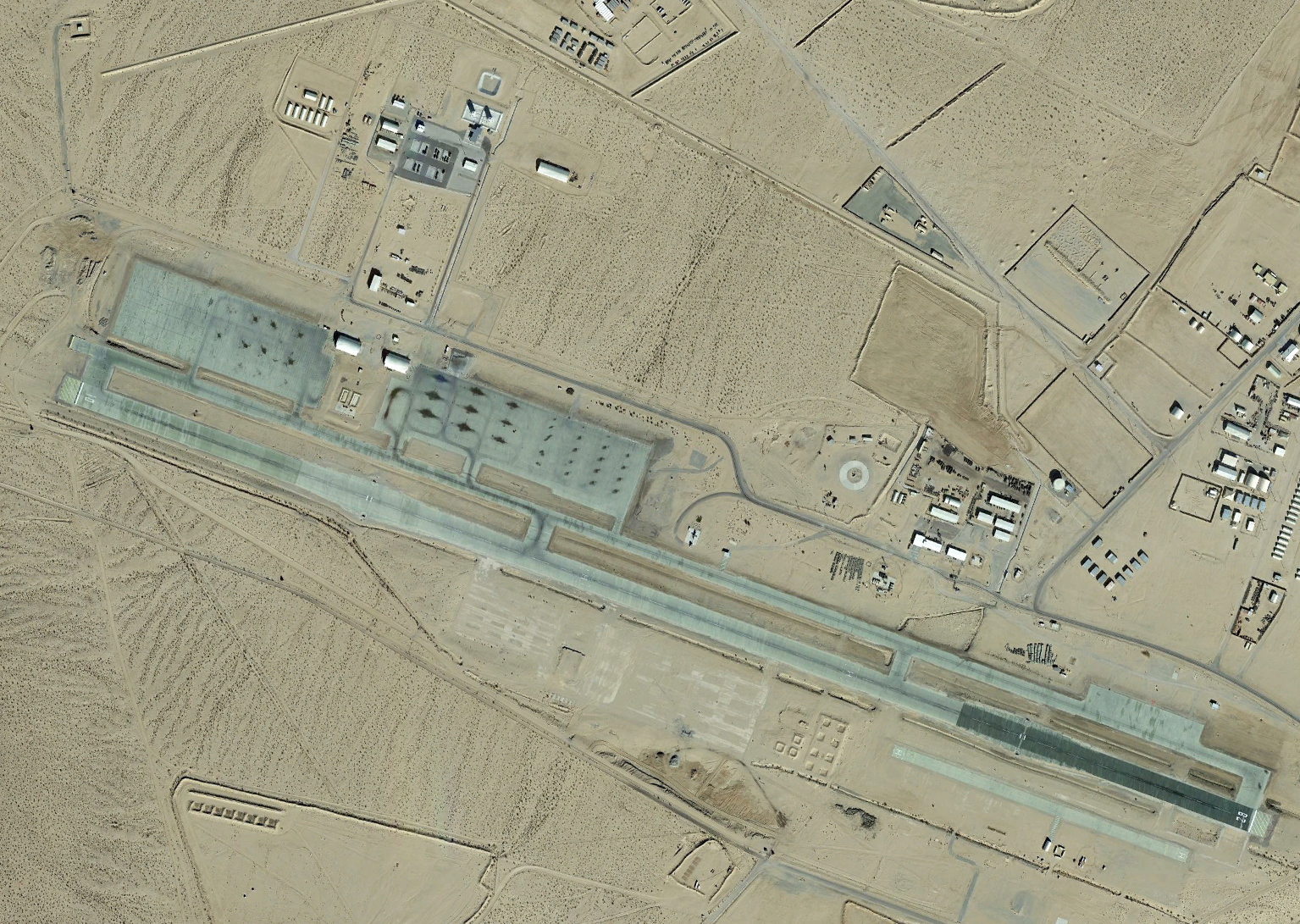
The runway, which is 8,000 feet long, as well as the taxiways and aircraft parking areas, are all constructed entirely of resilient and transportable AM-2 aluminum matting which is key to EABO and FARP operations.
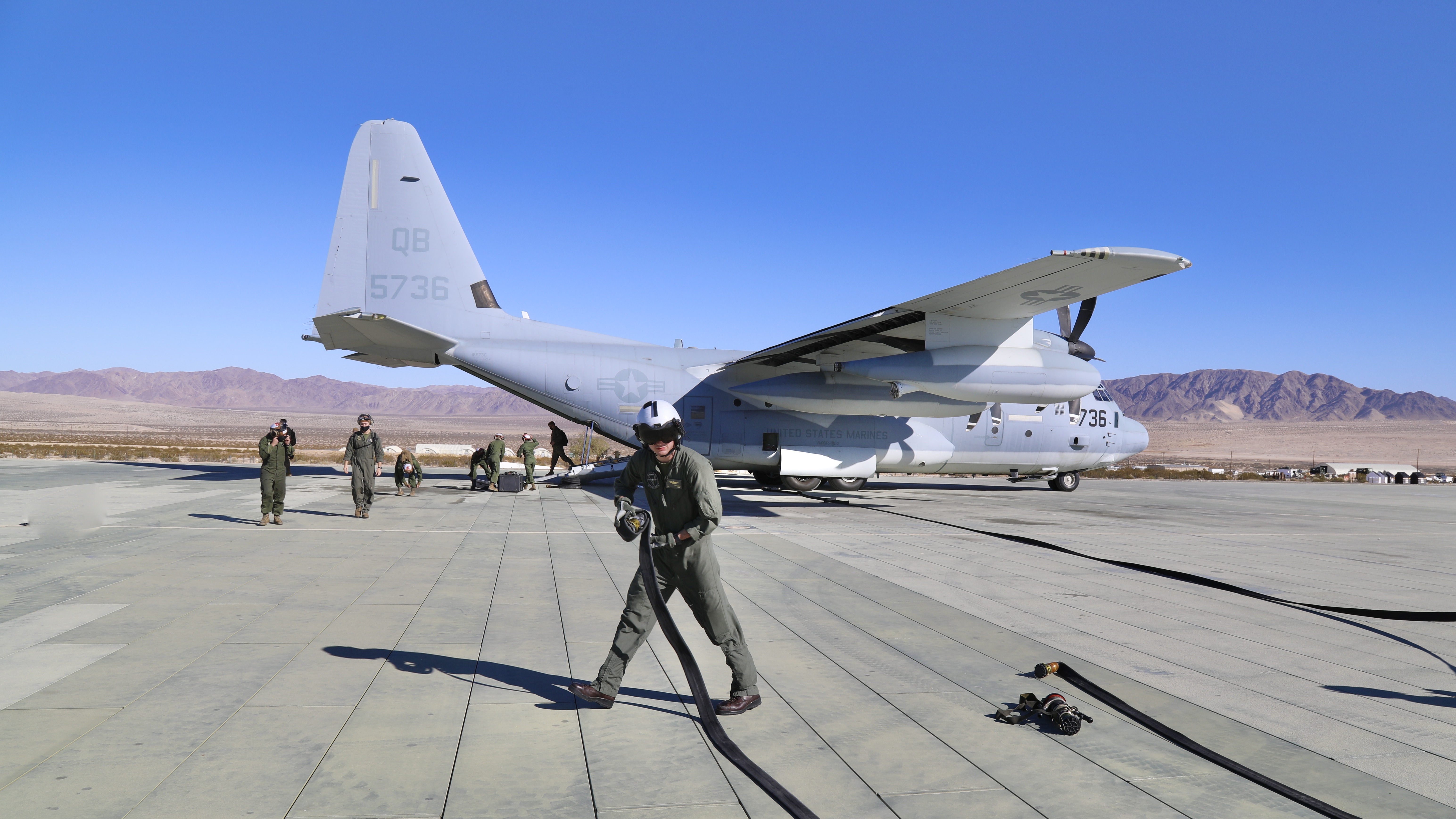
Before the KC-130 finished taxiing, loadmasters were quickly unstrapping the GBU-32s so they could quickly be offloaded from the rear ramp. With the ramp down, things happened quickly at the SELF as the Marines quickly unloaded the bombs and refueling hoses and other equipment needed for the mission.
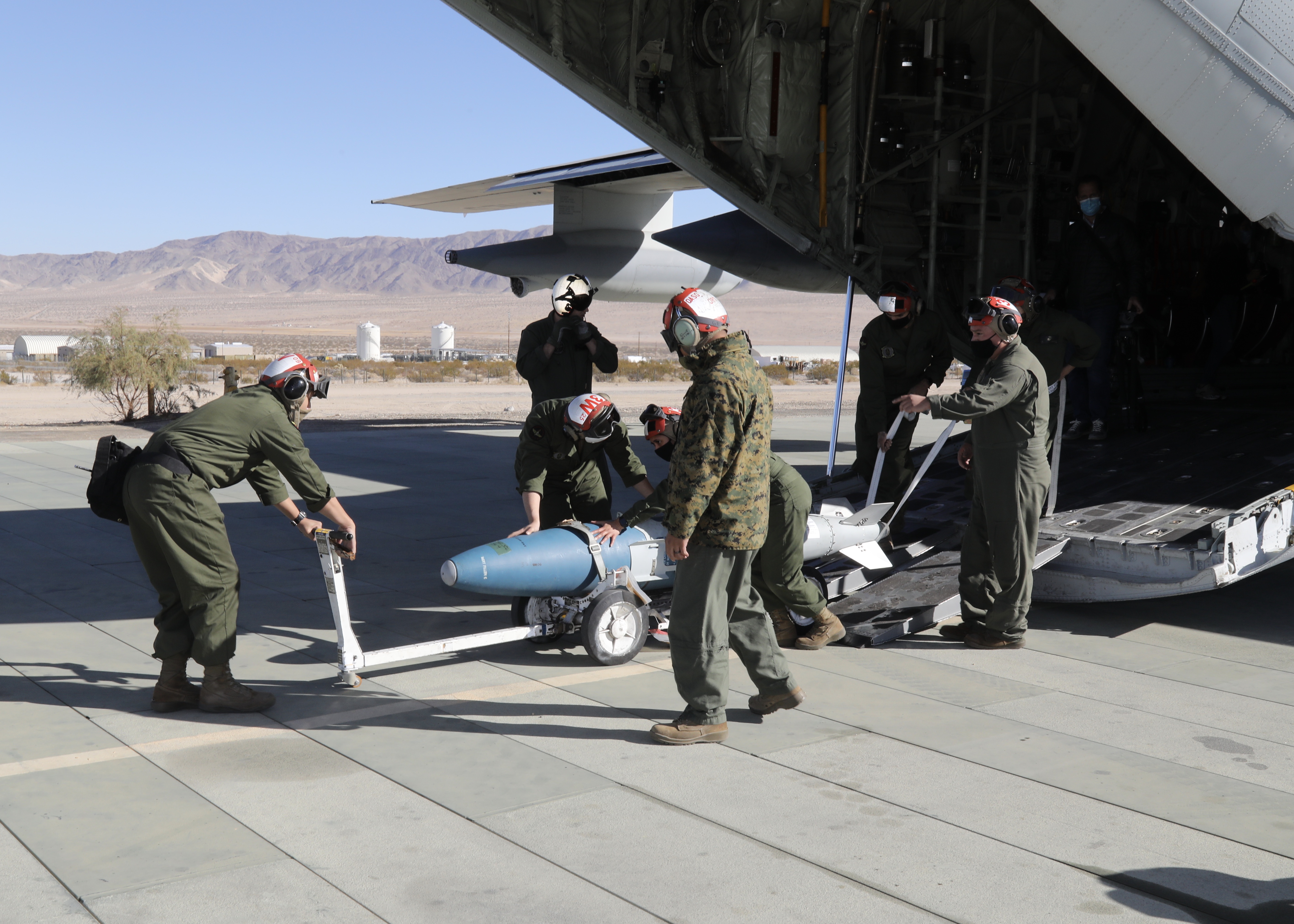
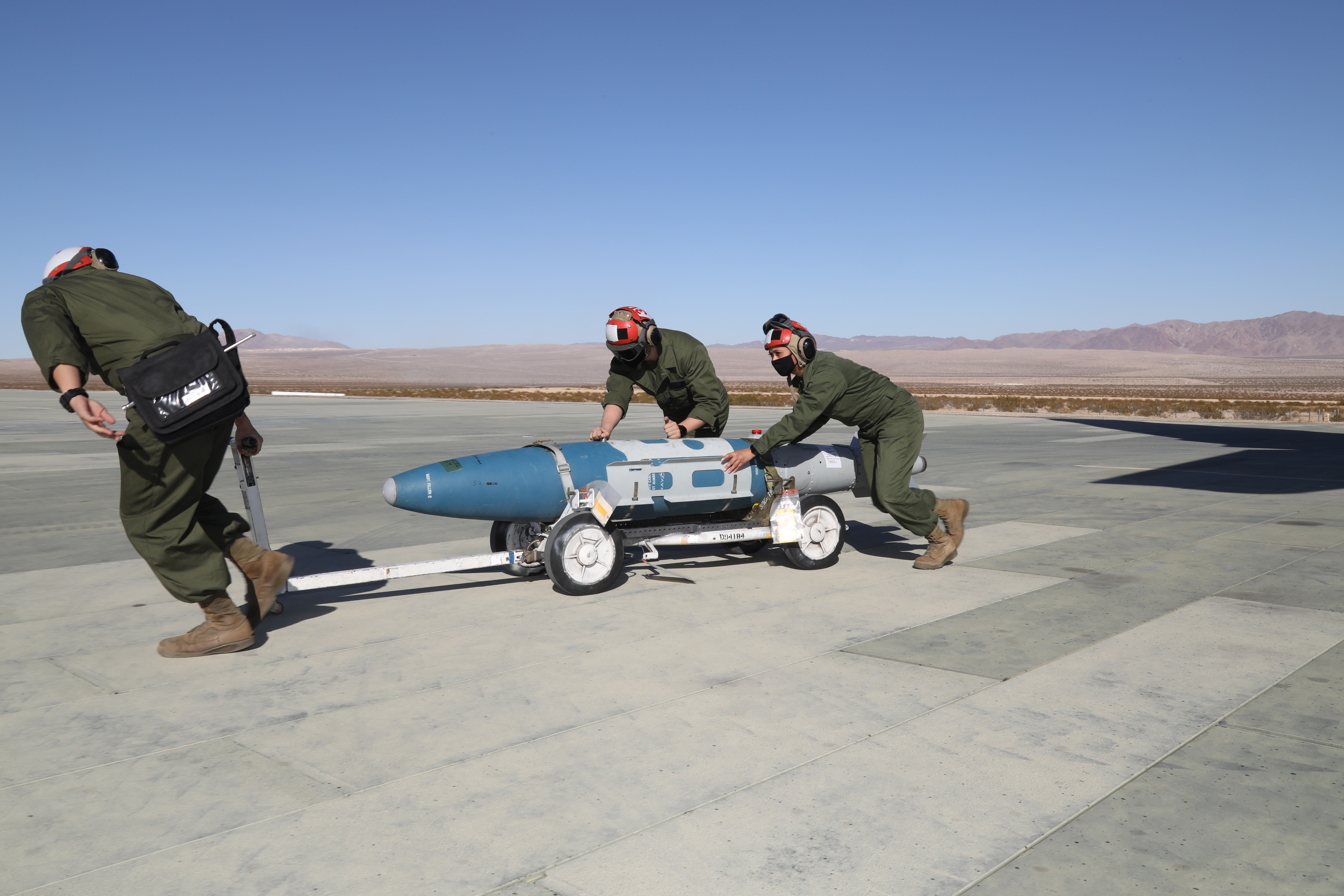
Soon after, the first of the two F-35Cs were flying overhead getting set to make history as the first example of this variant to use the M-31 arresting gear. Flying the first F-35C was Major Ahern, who made a hard break over the airfield much like an approach to an aircraft carrier.
Lining up for the arresting gear, Major Ahern touched down a few hundred feet before the gear before catching the sole wire. Unlike aircraft carriers that use three or four wires, the M-31 gear has just one. With the landing perfectly executed, Ahern raised the tailhook and let go of the wire, while members of the MWSS quickly checked over the gear before the second pilot touched down.
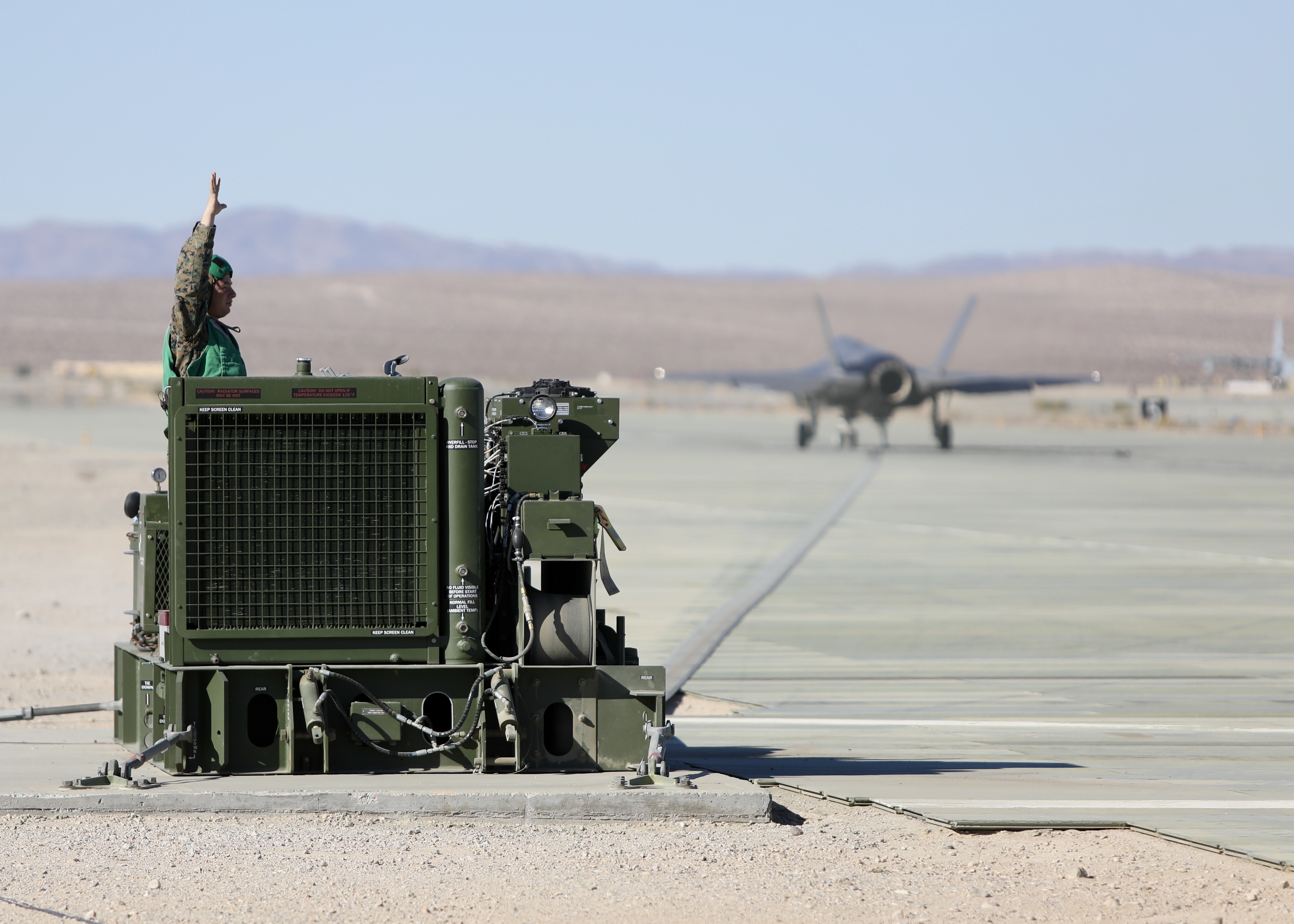
Over to the taxiway, the first F-35 made its way to the awaiting KC-130 for fuel and bombs. The fueling and loading normally each take about 10 minutes, but were both done simultaneously, making for a very quick turnaround time. Each ordnance crew loaded a single GBU-32 in each of the two bomb bays before heading back over to the rear of the KC-130. With the second aircraft loaded and fueled, both jets then took off from the matted runway before heading to a bombing range near Yuma, Arizona, where they dropped their ordnance.
The marriage of EABO with the F-35Cs may force Marine leadership to rethink the numbers of F-35Bs and Cs that they plan to purchase. According to the 2019 USMC Aviation Plan, the service intends to purchase 353 F-35Bs and 67 F-35Cs, but this number already seems to be up for debate.
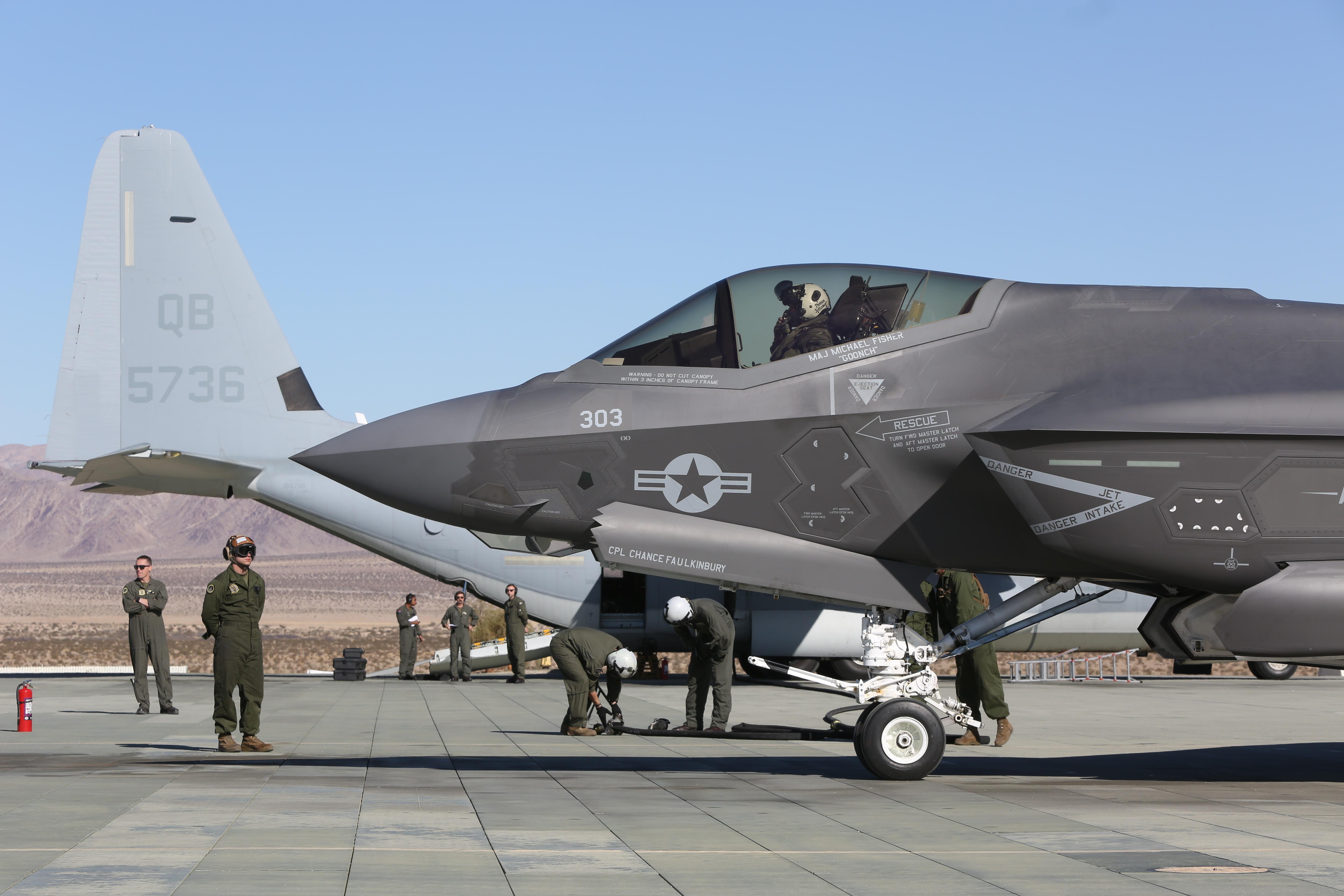
Both the F-35B and F-35C will provide the Marine Air-Ground Task Force (MAGTF) commanders with operational flexibility and tactical supremacy under many scenarios. But the roughly 7,000 pounds of additional fuel that the F-35C carries, as well as the ability to carry two 2,000-pound bombs compared to two 1,000-pound bombs in the F-35B, and now the F-35C’s proven ability for short field austere operations thanks to VMFA-314’s exploits, will make for some tough procurement decisions as the Pentagon looks increasingly at distributed operations in the Pacific.
Contact the editor: Tyler@thedrive.com
